Yoghurt is a lactic acid product, the result of lactic acid fermentation in milk. There are 2 main microorganisms that take part in the process of fermentation of yoghurt - Lactobacillus bulgaricus and Streptococcus thermophilus. These 2 bacteria are in a symbiotic relationship, one that helps in their survival and effectiveness when they are together.
Real yoghurt is made from just 2 ingredients - milk that meets lawful regulations and starter culture. Other products containing anything else, for example powdered dry milk, soya, starch, preservatives that stop fermentation, are not real yoghurt.
History of Yoghurt
If we are to trace the history of yoghurt to its dawn, we cannot reference any concrete facts but there are data that provide clues to when yoghurt began to be made for the 1st time and the stages it went through before becoming the dairy product we know today.
It is believed that Bulgarian yoghurt owed its beginnings to the lactic acid beverage "kumis" that Proto-Bulgarians made from mare's milk. Another theory links its origins to the Thracians, who noticed that soured milk lasted longer than regular milk. By adding sour milk to freshly boiled milk they created a soured milk product or "prokish". The Proto-Bulgarians also made a sour milk known as "qatiq" by adding a feta cheese dilution to sheep's milk.
The 1st mention of Bulgarian yoghurt we see in 8th century literature under its Turkish name yoghurt. Genghis Khan (reigned 1206-1227) used yoghurt as a food for his army and as a method of preserving meat. In Western Europe, yoghurt became famous thanks to the French king Francis I.
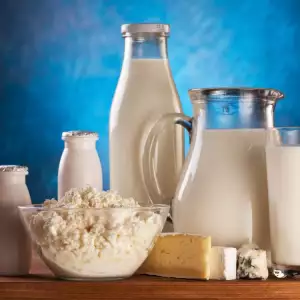
At the beginning of the 20th century, Bulgaria became famous for being the country with the most centenarians - 4 for every 1000 people. The prominent Russian biologist Ilyich Mechnikov was intrigued by this fact and proposed that the aging of a person was a disease just like any other. Mechnikov allowed that the protein substances in the large intestine turned rotten, forming toxic amines that are harmful to humans.
These are absorbed by the body and cause changes in the tissues of artery walls. As a result, we age, these changes leading to a premature death. Mechnikov believed that the hazardous effects of these microorganisms could be reduced using the appropriate lactic acid bacteria.
It was Mechnikov who provided the 1st strong scientific foundation for the nutrient, dietary and healing properties of Bulgarian yoghurt and attracted the attention of the world toward it with his claims.
Stamen Grigorov was the first to study the microflora of Bulgarian yoghurt. In 1905 he described it as consisting of 1 rod shaped and 1 spherical lactic acid bacteria, and in 1907 it was called Lactobacillus bulgaricus. In 1917, Orla Jensen proved that besides Lactobacillus bulgaricus, a coccus (spherical microorganisms) called Streptococcus thermophilus also took part in the production of yoghurt.
Composition of Yoghurt
Yoghurt is similar in composition to the milk from which it is made but is also very different in many aspects. The chemical composition of the yoghurt and changes that have taken place due to the action of the lactic acid bacteria determine the nutrition of the product. The chemical makeup of the different types of yoghurt are determined by a number of factors - the type of milk, the type of animal, the food it is fed, the technology used and others.
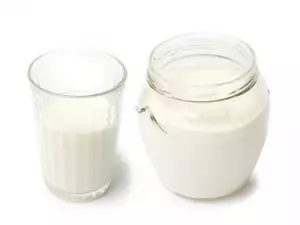
The nutritional value is determined by the content of nutrients and the ability of the body to use these components. Yoghurt is more nutritional than milk because of the changes brought on by Lactobacillus bulgaricus and Streptococcus thermophilus. The content of lactic sugar in yoghurt is lowered by 20-30%. The remaining lactic sugar serves as a source of energy - 4.1 calories. Yoghurt is a rich source of calcium, able to fully satisfy the needs of a person. Yoghurt contains more calcium than milk - over 400 mg per serving.
Choosing and Storing Yoghurt
Don't be fooled - not all products in the supermarket that have the "yoghurt" label on them means that they contain the healthy bacteria found in pure yoghurt. The main rule when choosing this dairy product is to look for a cup that says "live cultures" or "bio". Look at the ingredients label - whether it contains impurities such as powdered dry milk and preservatives.
It's important to know that you will only get the maximum amount of living organisms into your body if you eat the yoghurt as soon as possible after you buy it. Usually, real yoghurt has a shelf life of about 3 to 5 days when stored in the refrigerator. Outside of it, at room temperature, it turns sour very quickly.
Culinary Use of Yoghurt
Yoghurt is a product that enjoys wide use in cooking. It can be eaten directly from the cup on its own or in combination with different fruits, muesli and sweets.
Yoghurt is used to make all kinds of cakes, thickening agents for soups, as well as to make tarator. Yoghurt complements the taste of many vegetable dishes, moussaka and other delicious dishes. Yoghurt with honey and walnuts is an incredibly tasty and healthy dessert. According to the Cook13.com staff, the best-tasting and softest pancakes are indeed made with yoghurt.

Using Starter Culture for Yoghurt
Yoghurt is obtained after live cultures are added to milk. These microorganisms use the sugars in the milk as a source of energy, releasing lactic acid - the same kind that accumulates in our muscles after physical exercise. It curdles the milk, turning it into yoghurt.
Only a product containing live bacteria is truly healthy. Its restorative power is due to the beneficial probiotics - Lactobacillus bulgaricus, Streptococcus thermophilus, - Lactobacillus acidophilus. They have the capability of protecting the body from pathogenic bacteria by eating the food that the latter need to survive.
Fermentation is not possible with just 1 of the bacteria present. Each of the 2 bacteria plays its own role in the process of fermentation. The fermentation process ends naturally, through cooling. If it is left for several days in a warm area (outside the fridge), fermentation continues, the milk sours and the taste becomes unpleasantly bitter.
Making Homemade Yoghurt
The main thing when making your own homemade yoghurt is to work with pure products, not impurities. Culturing yoghurt at home consists of 4 main stages: straining, boiling, adding the starter culture and incubating. First, strain the raw milk through a loose-textured cloth. Then boil on low heat, pour into jars for culturing and leave it at room temperature until it cools to about 120°F (47 °C).
Add 1-2 tbsp of quality yoghurt to each jar and stir carefully. The amount of already made yoghurt that is added needs to be 0.5 - 1% of the total milk that is to be cultured. Then, seal the jars and wrap them in wool for 2.5 - 4 hours, depending on the surrounding temperature.
Benefits of Yoghurt
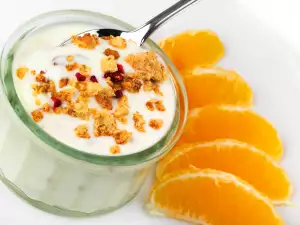
For centuries now, yoghurt has maintained its reputation as a medicinal treatment and dietary food. There are scientific proofs showing that yoghurt helps against intestinal inflammation, canker sores, gas, fungal infections, diarrhea, excretory system infections, irritable bowel syndrome, herpes and many other health problems.
The calcium maintains proper cardiac muscle function. Yoghurt is exceptionally important for proper functioning of the nervous system as well. It stimulates endocrine gland action and speeds up blood clotting. Yoghurt is an irreplaceable source of calcium for people suffering from lactose intolerance, as well as middle-aged women who often suffer from bone deformation due to a lack of calcium.
Regular consumption of yoghurt significantly decreases the cholesterol in the blood serum. Usually the quantity of cholesterol is significantly lowered for a period of 7 days from the initial intake of yoghurt. Dr. Michael Zemel claims that eating low-fat yoghurt 3 times a day can double weight loss. A study has shown that with low-fat milk, the burning of calories is sped up by 33%.
Yoghurt is a vital food for diabetics but it needs to have a low fat content in order to ensure better handling of the carbohydrates. This requires that yoghurt for diabetics is made from nonfat milk.
American studies have proven that the percentage of vaginal infections caused by the fungus Candida albicans and accompanied by itching, burning and discomfort were substantially lower in women who consumed 1 cup (250 g) of live cultured yoghurt daily. Additionally, regular consumption of yoghurt helps the overall strengthening of the immune system.
The bacteria acidophilus is not an anticancer treatment but there are data that it prevents the recurrence of tumors in patients who have had bladder cancer treatments. This means that the probiotics in yoghurt prevent pathogenic microorganisms from synthesizing substances that cause malignant tumors.
Many people suffer from lactose intolerance, meaning they can't drink milk, which deprives them of calcium to some extent. Yoghurt with live cultures is suitable for them because the microorganisms in it have processed the lactose ahead of time.
Yoghurt for Beauty Care and a Thin Waist
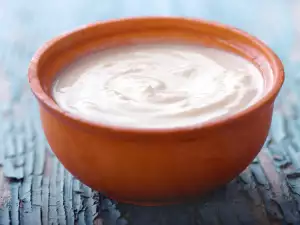
There exist many other applications of yoghurt - various compresses, facial and hair masks, diet plans. The diets that stress the consumption of yoghurt vary but all of them aim to moreover restore the natural rhythm of the digestive system, not cause instant weight loss.
Diet with Yoghurt
If you eat a cup of yoghurt every morning on an empty stomach, in 14 days' time you will change and improve digestive tract function, your upset stomach will be gone and the excess gas as a result of poor function of the bacteria in the large intestine will be decreased. To a dietary breakfast with yoghurt you can also add muesli, some raw seeds or dried fruits. The yoghurt diet also dictates that you eat a cup of yoghurt for dinner too. During the day you can drink ayran and eat fruits and vegetables.
There are also data that yoghurt can help against dandruff. Greek healers consider it a powerful ally in the battle against those unpleasant skin flakes. They recommend massaging the skin on the head with yoghurt for about 10 min., then keeping it wrapped in a towel for 1 hour. Finally, wash the hair thoroughly with water. Apply this procedure at least once a week.
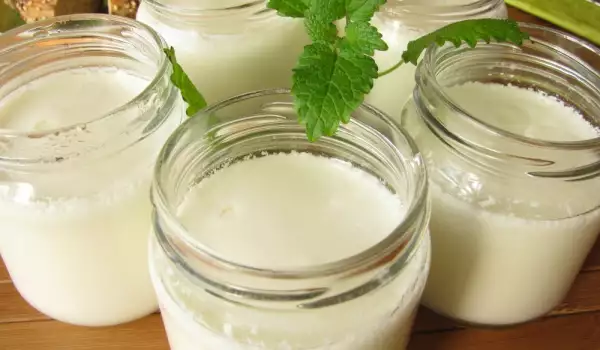



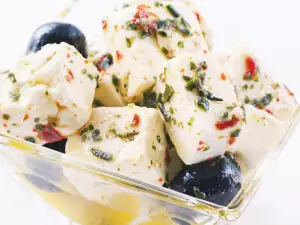






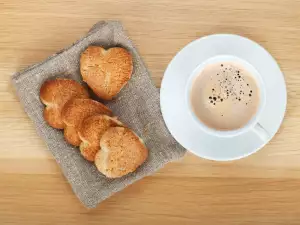


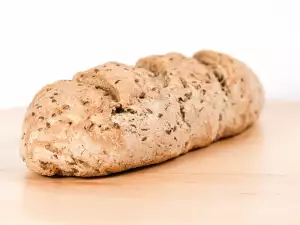





Comments